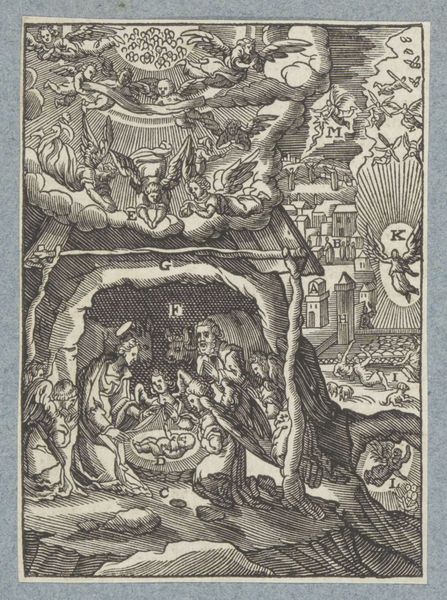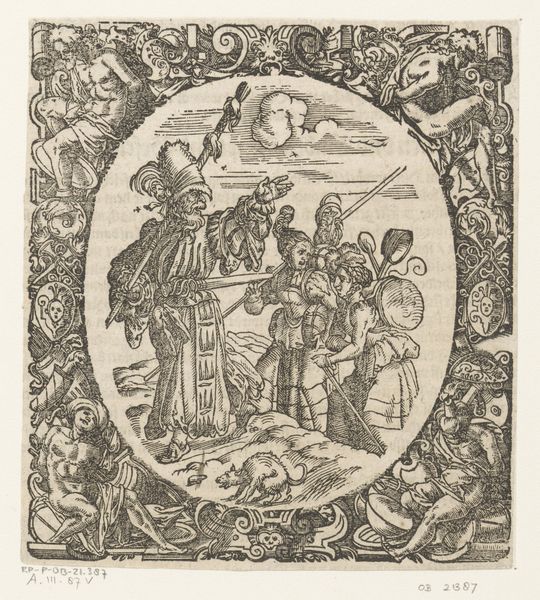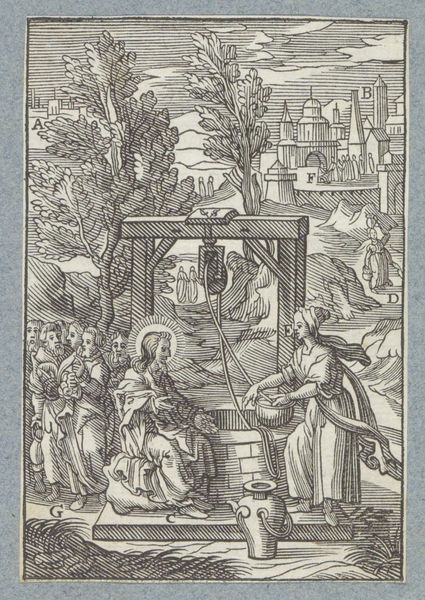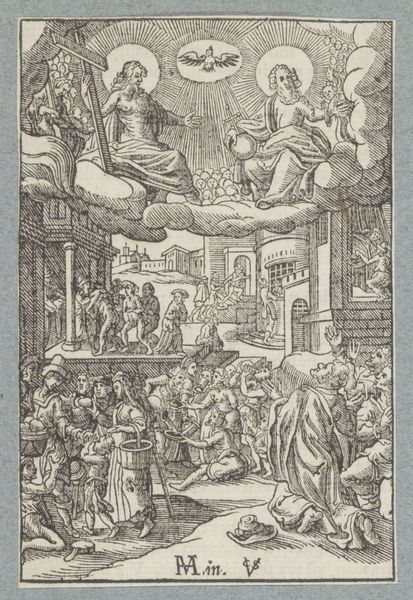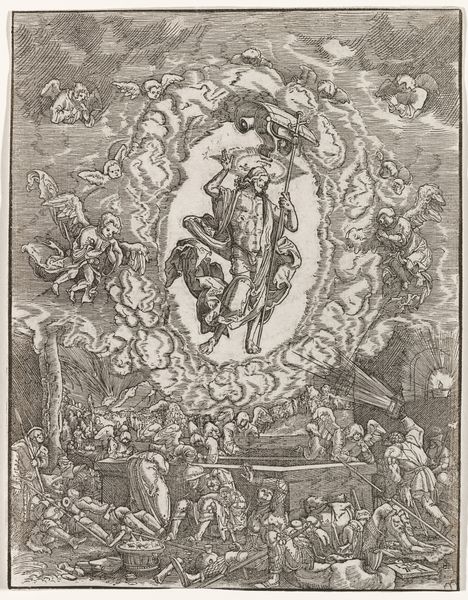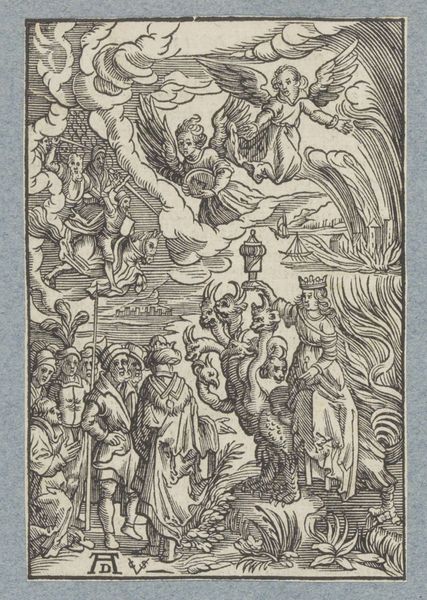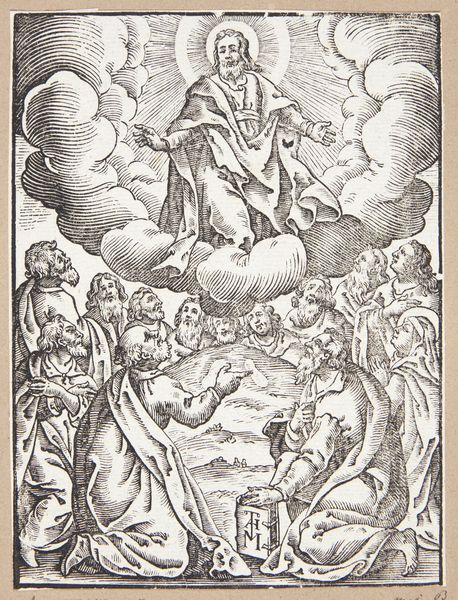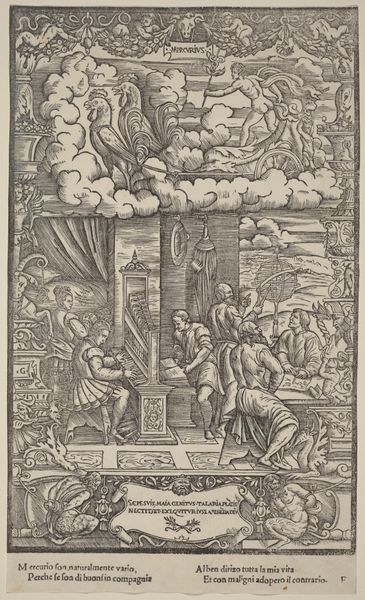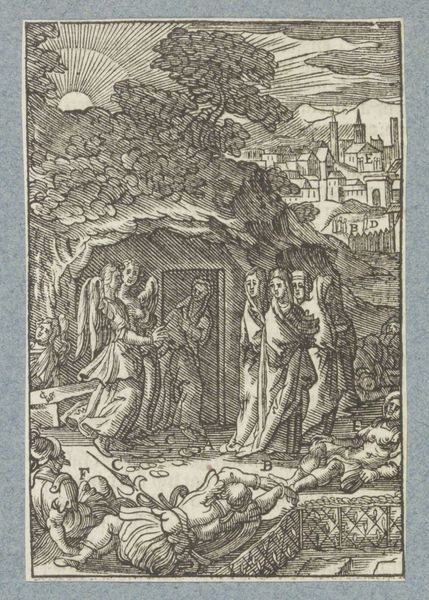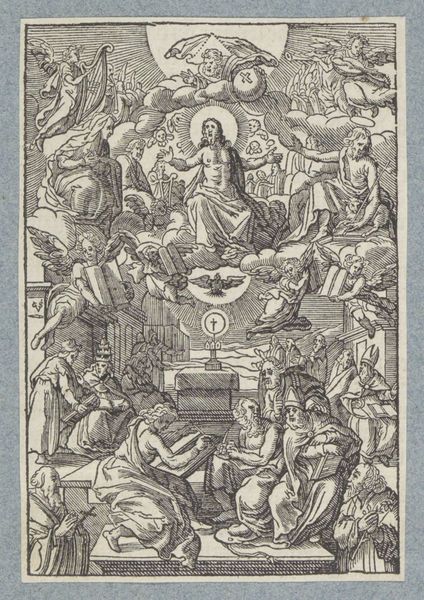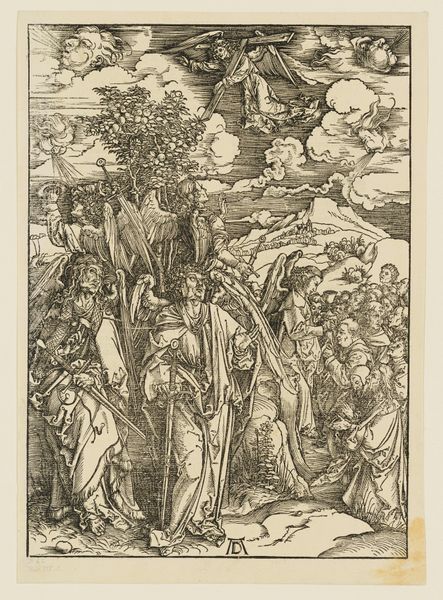
print, engraving
#
baroque
# print
#
figuration
#
line
#
history-painting
#
engraving
#
christ
Dimensions: height 111 mm, width 75 mm
Copyright: Rijks Museum: Open Domain
Curator: Welcome. We are looking at a 1629 engraving by Christoffel van Sichem II titled "Resurrection of Christ," here at the Rijksmuseum. Editor: It strikes me as so...theatrical. The almost frantic energy in the line work really evokes a sense of drama. What I find truly impressive is the sharp detail achieved through engraving, which emphasizes the contrast between light and shadow. Curator: Yes, van Sichem certainly uses the formal visual vocabulary of Baroque art. Look at the layers of iconography. Christ emerging triumphantly, flanked by angels, piercing through the underworld. Each figure, each cloud, meticulously rendered and strategically placed. What visual echoes do you pick up here? Editor: The Roman soldiers, for one, at the base, guarding the tomb. This detail situates the moment within a very specific history of power and occupation, highlighting the vulnerability inherent in any resistance movement—be it religious or otherwise. I am thinking of post-colonial movements and iconography, the clash between occupying forces and spiritual transcendence… Curator: And notice how Christ is posed, banner in hand—a clear visual reference to the “triumph” archetype. In Baroque symbolism, light often represents divine grace, piercing through darkness, which here is literal and figurative, embodied by the devilish figures chained beneath. Van Sichem effectively contrasts chaos with order, a defining Baroque sensibility. Editor: It really is an incredible synthesis, a layering of narratives – power, oppression, spiritual emancipation, but let’s consider also, the image’s place in the visual culture of its time. Who was this image for, and how did it function within those systems? A lot can be read in the choice of engraving as a relatively accessible medium. Curator: True. Printmaking allowed for wider dissemination. And consider how easily a piece like this, visually complex yet thematically straightforward, could have been reinterpreted and adapted in various contexts throughout different eras. It highlights the adaptability of core visual motifs of renewal in the face of adversity. Editor: Precisely. I am struck by how potent these enduring themes remain, rendered here with such distinctive artistry. Curator: It offers so much to consider when contemplating cycles of oppression and spiritual liberation.
Comments
No comments
Be the first to comment and join the conversation on the ultimate creative platform.
